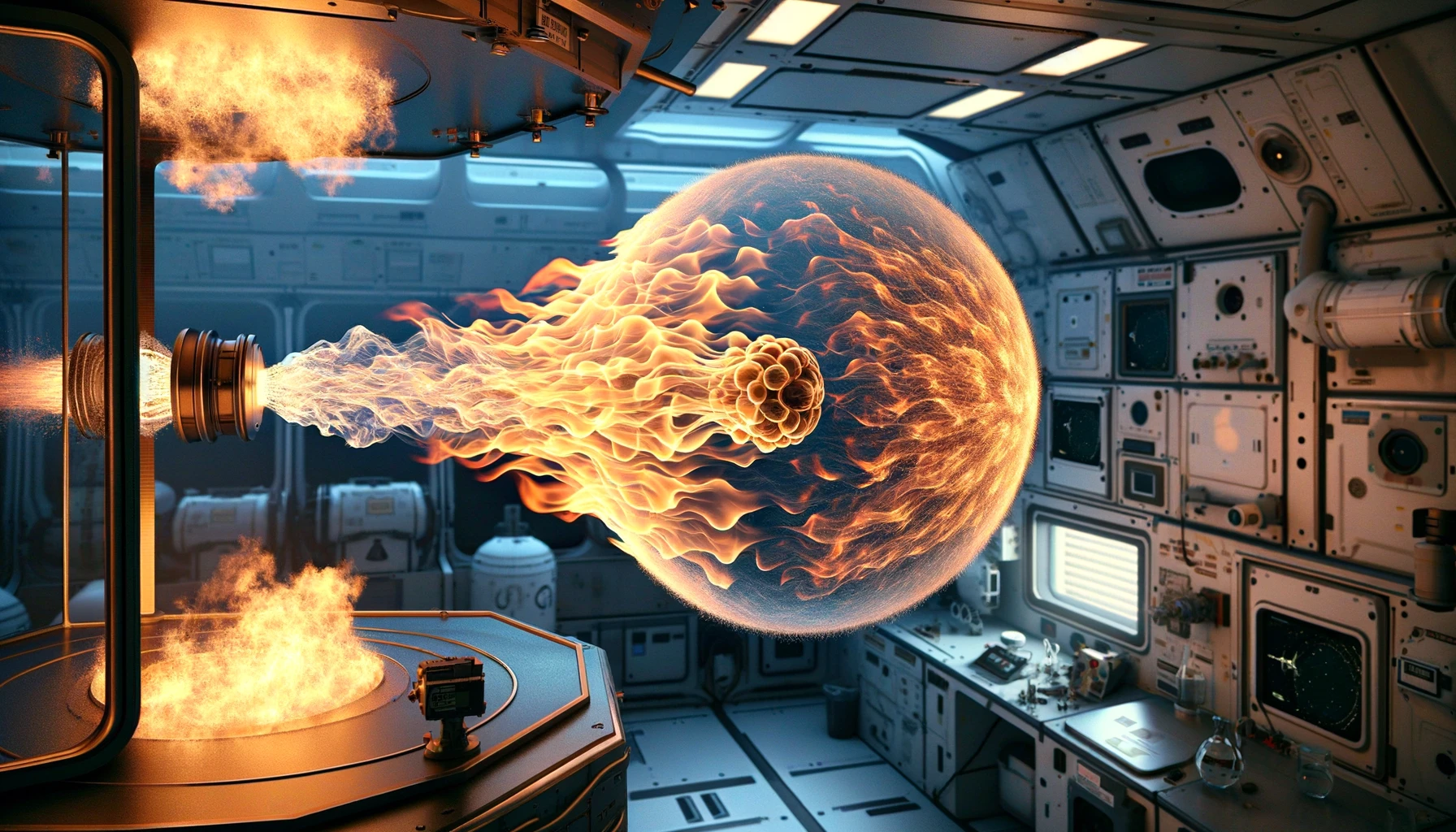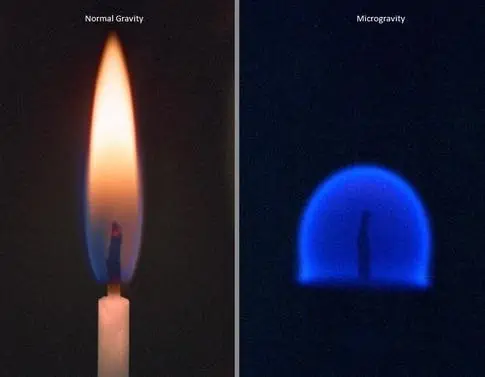 In microgravity, a candle flame behaves in a completely unexpected way due to the absence of an updraft. Under these conditions, oxygen is attracted to the flame by a completely different mechanism, which opens new horizons in the study of combustion. The first experiment of this kind was carried out in 1997, aboard the space shuttle Columbia. Called "Structure of Low Lewis Number Flame Bubbles" (SOFBALL), the experiment involved the use of a sealed chamber where flames, in microgravity conditions, can burn for a long time.
In microgravity, a candle flame behaves in a completely unexpected way due to the absence of an updraft. Under these conditions, oxygen is attracted to the flame by a completely different mechanism, which opens new horizons in the study of combustion. The first experiment of this kind was carried out in 1997, aboard the space shuttle Columbia. Called "Structure of Low Lewis Number Flame Bubbles" (SOFBALL), the experiment involved the use of a sealed chamber where flames, in microgravity conditions, can burn for a long time.
Recent research has the potential to provide significant practical insights, especially in the field of engineering. For decades, engineers have been interested in building internal combustion engines that run on a lean mixture of fuel and oxygen, which should theoretically produce something similar to a bubble of flame in space. "If we could burn a leaner fuel mixture in engines, we would achieve greater fuel efficiency and less pollutant formation", he explains Paul Ronney, a combustion researcher at the University of Southern California who conceived and helped design the space shuttle flame experiments.

At the same time, the importance of temperature in the combustion process is crucial because the rates of the chemical reactions involved are extremely sensitive to temperature variations. A mere 10 percent increase in temperature can double the rate of combustion and at the same time increase the rate of formation of some pollutants thirteenfold, especially the nitrogen oxides that contribute to the blackening of our skies.
Thus, the study of fire in microgravity not only expands our knowledge of combustion under extreme conditions, but also provides innovative perspectives for the development of future technologies. By understanding the precise mechanisms that govern combustion in the absence of gravity, researchers hope to design more efficient and less polluting propulsion systems and engines, marking an important step toward a sustainable future.
















